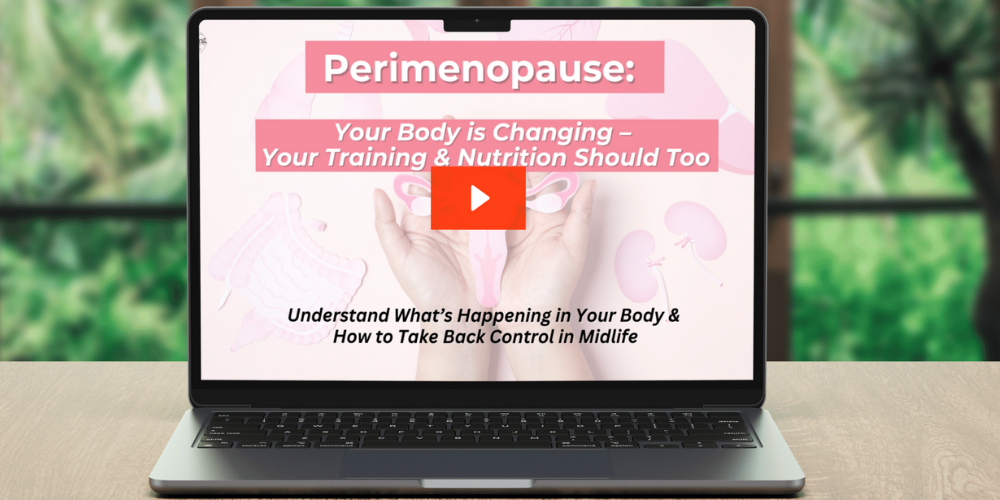Weight Loss After 40: Don't Settle thrive during Perimenopause and After Menopause

Why Weight Loss Feels Different After 40
Let’s face it—our bodies after 40 feel like they’ve thrown out the old rulebook. The weight loss tricks that worked in your 30s suddenly don’t. You’re eating the same, exercising more, and yet the scale seems to have a mind of its own. What’s going on?
Here’s the truth: hormonal changes during perimenopause and menopause completely shift the way your body handles fat, muscle, and energy. But this isn’t about blaming hormones; it’s about learning to work with them. Let’s explore science-backed strategies to help you lose weight, feel strong, and reclaim your energy.
Science-Backed Strategies to Work With Your Hormones
Rethink Your Workouts: Strength Training Over Cardio
The old mantra of “burn more calories with cardio” doesn’t hold up after 40. In fact, doing more cardio could be what’s holding you back. Here’s why: perimenopause raises your stress hormones, and extended cardio sessions only add to that stress, making it harder to lose weight.
Instead, focus on building muscle. Muscle is your metabolic best friend—it burns more calories at rest and counters the natural muscle loss that comes with age. Gaining muscle allows your body to burn more calories without overloading your stress levels.
- Actionable Tip: Start with two days of strength training per week, focusing on compound movements like squats, deadlifts, and push-ups. Gradually increase weight as you grow stronger.
Prioritise Protein for Muscle and Metabolism
After 40, your protein needs increase. Without enough protein, your body can struggle to maintain muscle mass, leading to a slower metabolism. To keep your metabolism humming, aim for 1.6–2.2 grams of protein per kilogram of body weight daily. If that feels overwhelming, start small—focus on getting 40+ grams of protein at breakfast. You’ll not only support your muscles but notice fewer cravings throughout the day.
- Actionable Tip: Include high-quality protein at every meal. Try eggs and spinach for breakfast, grilled salmon with a leafy salad for lunch, and a hearty lentil soup for dinner. A post-workout protein shake is a quick and easy way to top up your intake.
Manage Stress to Lower Cortisol
Chronic stress triggers the release of cortisol, a hormone that encourages fat storage, especially around your belly. If you’ve noticed your waistline expanding despite no big changes in your diet, stress could be the culprit. The tricky part? Stress often creeps up on us without notice—like a pot of water gradually coming to a boil.
The key is finding ways to lower stress. This doesn’t mean meditating for hours (unless that resonates with you). Simple practices like deep breathing, journalling, or activating your vagus nerve can calm your nervous system and lower cortisol.
- Actionable Tip: Take five minutes a day for belly breathing. Practise while waiting at traffic lights, standing in line, or when your dog takes an eternity sniffing every tree. Consistency is more important than perfection.
Sleep Is Your Secret Weapon
Sleep isn’t just rest; it’s when your body repairs, rebuilds, and regulates hormones like leptin and ghrelin, which control hunger and fullness. Poor sleep can derail your weight loss goals faster than any late-night Netflix binge. Yes, those evening moments might feel like your only “me time,” but sacrificing sleep often leads to more cravings, sluggishness, and belly fat.
- Actionable Tip: Prioritise sleep for one week and see what happens. Turn off screens an hour before bed, sip chamomile tea, and keep your room cool and dark. Women generally need more sleep than men, so aim for 8–9 hours a night.
Rethink Your Relationship With Sugar
As you age, your body becomes more sensitive to insulin, meaning sugary snacks can quickly turn into fat storage. But cutting back on sugar doesn’t have to mean deprivation—it’s about balance. If you’re craving sweets, it’s often your body’s way of signalling an underlying issue, such as a blood sugar dip or stress.
- Actionable Tip: Swap processed snacks for whole-food options. Instead of a muffin, try Greek yoghurt with berries. Craving chocolate? Go for a square of dark chocolate (85% cocoa or higher). Pair carbs with protein, like apple slices with almond butter or banana with Greek yoghurt, to keep your blood sugar steady.
Your Next Steps Toward a Healthier You
Weight loss after 40 doesn’t have to feel like an uphill battle. By working with your body—not against it—you can navigate hormonal changes with confidence and grace. Start small. Choose one or two tips from this list and try them this week. Pay attention to how you feel and build from there.
And remember, it’s not about perfection. It’s about progress. Every small change brings you closer to feeling like your best self.
Ready to take control of your health? Book a discovery call with me and we can see if my 1:1 coaching programme will be the investment in your health that your body is craving...
Tired of Not Knowing What to Eat?
The 1,2,3 Meal Method Takes the Guesswork Out of Healthy Eating!








